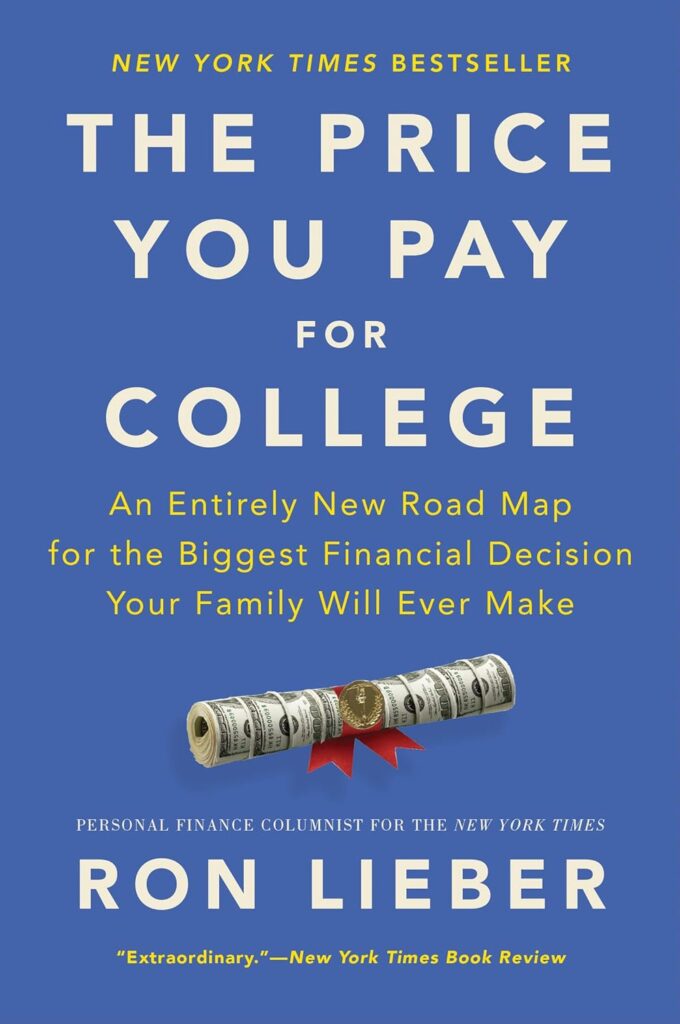
For many students today, getting into college is the biggest concern. However, once your teen is accepted, what comes next is how to pay for it. As college costs are skyrocketing and many high school students and their parents try to figure out how they can afford the price tag, scholarships are what many families hope will be the answer.
Unfortunately, there are many misconceptions about scholarships. Most families don’t understand that there are many different types of scholarships and when it comes to any kind of full-ride scholarship or close to it, they are extremely competitive and very few students across the nation are lucky to qualify.
For this reason, it is important to understand the scholarships landscape.
Here are 5 misconceptions about scholarships
1. Small local scholarships are a waste of time
Especially if you plan to go to school locally, local scholarships are one of the best opportunities to earn substantial financial aid. Even if the amount is small, read the criteria and go for it. Small amounts can add up and really help to chip away at college costs.
If you plan to attend a local community college or university, read individual scholarship criteria carefully. Many scholarships provided by the university or community partners that list “local” as a requirement are a tremendous opportunity to take advantage of since being local will not apply to other student applicants.
High school counselors get frequent updates on local scholarship information so be sure to touch base with your counselor regularly to find out more and stay on top of deadlines.
2. It’s hard to find scholarships.
There are many opportunities out there for high school students to find scholarships but first, you need to understand the types of scholarships available, so you know which to apply for.
What are the main types of scholarships?
Grants:
gift aid awarded to a student based on financial need. This includes Federal Pell Grants, Federal Student Assistance Grants, etc. Students must complete the FAFSA for this opportunity.
Merit-Based Scholarships:
awarded based on academic achievements, extracurriculars, major of study, and other types of merit that award an objective. These do not consider a student’s financial need, but an award based on these special merits. There are some universities who award a considerable amount of merit aid and others that don’t offer any. Talk to your school counselor and do your research to create a list of target schools where merit aid is plentiful.
Need-Based Scholarships:
the term “need-based” is exactly how it sounds. This is a designation that is based on a student’s financial needs. These types of scholarships are primarily determined by the FAFSA and for students who demonstrate financial need. There is no income cut-off to qualify for federal student aid with many factors playing into consideration including family size, year in school, and situation.
Athletic-Scholarship:
awarded aid that is linked to the sport you play. You must continue to play for this team to receive the aid. (see number 5 for more information on this topic)
Foundation-Scholarships:
Most universities offer Foundation Scholarships as an easy way for students to apply to dozens of offers through one application. This simple application process may require a few personal statement essays, letters of recommendation, or a completed FAFSA. Foundation applications upon submission will allow a student to earn a grant that is awarded to pay for their educational costs.
Community Foundation Scholarships:
Check in your area if your high school is involved with local community foundations. Community Foundation Scholarships are a great opportunity for students to take advantage of scholarship opportunities offered by community partners, donors, and other local supporters. These foundation applications will require personal statements and other documentation so make sure to find out more.
Local Scholarships:
Local banks, credit unions, businesses, nonprofits, and other organizations offer many awards to high school and undergraduate students. If application items are not available from a community foundation or university foundation scholarship, go on company websites or call before the deadline.
National Scholarships:
Even though national scholarships are widely available, the number of recipients is very few. Encourage your child to apply to as many scholarships that are out there but know the larger the application pool, the small the chance of earning.
3. I won’t qualify for scholarships.
Some people believe you have to be economically disadvantaged to apply. Or you may think, your family makes too much money. That is not the case.
Many scholarships require you to complete the FAFSA application, however, the criteria for the scholarships vary for all types. Most scholarships are available for high school juniors, seniors, and undergraduate students.
There are scholarships out there based on the color of your hair. Trust me. You will meet the criteria of one, you just need to do your research.
4. I Have Top Grades and Test Scores So I Will Qualify For Lots Of Scholarships
Lots of parents believe that just because their child is smart, and making good grades, scholarships will fall into their lap. However, today, strong academics and near perfect test scores are far more common than they used to be. In fact the top 10% of most high school classes fit this description.
Part of this is due to grade inflation and part of this is due to an increasing number of parents and students choosing to pay for test prep services to help students improve their test scores. The result is that competition is fierce for the limited number of purely academic based scholarships, but even a small chance at a significant award is better than none. So, it’s worth it to at least try.
5. I Am A Top Athlete At My School So I Will Earn A Sports Scholarship
Student athletes and their parents may be convinced that by playing on a sports team, their child will be scouted or have lots of scholarship options; that is not the case for many students. In fact, many parents pour thousands of dollars into paying for competitive travel teams, private coaching and other expenses with the false belief that this investment will pay off later in the form of a scholarship. Sadly, this isn’t often the case, and parents should really consider if perhaps that money might be more wisely put into a college savings account.
The reality is only about 7% of high school athletes go on the play sports at the collegiate level and only 2% at the division I level. Division I colleges are the only ones that award scholarships for athletes and this does not include the Ivy League Schools as they DO NOT give out sports scholarships of any kind.
Also, even at the Division I level, each athletic department has limited funds to use for scholarships, so it is rare for students to get a full ride. At the Division III level, there are not athletic scholarships awarded.
Plus, even sports scholarships have their requirements; they are never freely handed over to students. Students still have to have achieve minimum GPA’s and test scores and they will have to maintain certain standards to keep their scholarship. These standards are becoming increasingly more competitive at many top ranked schools.
All require a student to apply, fill out a FAFSA and often a CSS in order to even be considered.
6. It’s too late I missed the deadline for scholarships
For graduating high school students, the best time to apply for a scholarship will be late-fall or early spring.But , it is never too late to start your research now to find out what scholarships are available.
Most college scholarship selection committees read applications in the summer before the semester, so you might be surprised to discover you have more time than you think. Also, many universities have scholarships for students who are already pursuing their degree and there are some outside organizations that award scholarships to upper level students based on the degree they are seeking.
It’s never too late to find scholarship opportunities, you just have to be willing to talk with school counselors, college financial aid departments and do your research.
Takeaways
Statistics show that over 1.7 million scholarships are awarded annually. From this, only 7% of college students receive a scholarship, 16% a state scholarship, 13% a private scholarship, and 1.5% of students will receive a full-ride scholarship . Although these numbers are small, the data does not include the number of students that apply. These margins are very small because many teens are not actively searching for scholarship opportunities.
Parents need to talk with their high school students about the types of scholarships and find out what criteria would best match their teen’s extracurriculars, interests, and circumstances.
The FAFSA (Free Application for Federal Student Aid) awards to all students that demonstrate need and is available to all not just the economically disadvantaged. Most scholarships require you to complete the FASFA …
As students and parents are making decisions regarding what college to attend and how to pay for it, the book The Price You Pay for College has become an essential and incredibly valuable read in today’s competitive and expensive college environment.

Many families are choosing the audible version to listen to with their kids so that everyone is on the same page and to help in discussing college costs realistically and openly.
Are you in the thick of raising your tweens and teens? You may like this book by Whitney Fleming, the co-owner of Parenting Teens & Tweens: Loving Hard When They’re Hard to Love: Essays about Raising Teens in Today’s Complex, Chaotic World.

Parenting Teens and Tweens is HARD, but the following popular posts that other parents found helpful might just make it a little easier.
Five Simple Steps to Help You Discuss College Affordability with Your Kids
Do These Five Simple But Important Things to Prepare Your Senior for College
Don’t Get Surprised by these Hidden and Often Unexpected College Costs
*This post contains affiliate links where we may earn commissions for items purchased from links on our site.







Leave a Comment